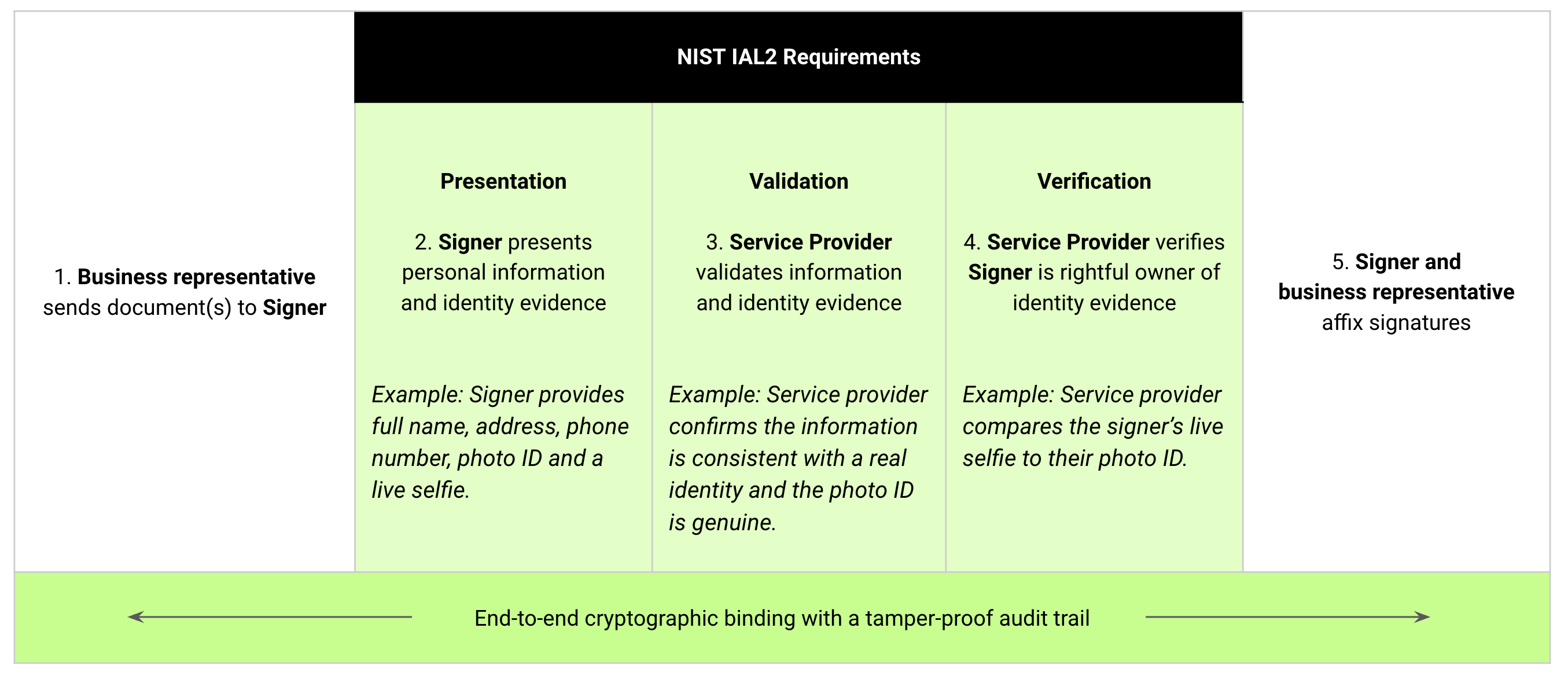Understanding IAL2 Requirements for Electronic Odometer Disclosures

The automotive industry is embracing electronic signatures as more and more commerce shifts online and businesses need to serve customers beyond their physical footprint. Historically, regulatory requirements have blocked the use of eSign on two essential documents: odometer disclosures and powers of attorney. This article focuses on the former—specifically, how meeting the US Government’s Identity Assurance Level 2 (IAL2) standard unlocks the ability to execute odometer disclosures electronically and why this is transforming how and where businesses serve customers.
Any business that touches vehicle title and registration potentially benefits from adopting electronic odometer disclosures. This includes dealerships, lenders, insurance carriers, salvage operators and tow trucks. All need to collect odometer disclosures at some point in their operations.
What is an Odometer Disclosure?
Odometer disclosures are legally mandated in the US to prevent odometer fraud and ensure accurate mileage reporting during vehicle transfers. Unlike many regulations related to vehicle transfers, this is a federal requirement that was established after Congress passed the Federal Truth in Mileage Act of 1986. To maintain the integrity of these disclosures while transitioning to electronic signatures, the US government has established certain requirements, including IAL2 identity proofing. The current requirements are elaborated in Title 49 of the Code of Federal Regulations and summarized below.
What is IAL2?
IAL2 stands for Identity Assurance Level 2, a framework developed by the US Government’s National Institute of Standards and Technology (NIST) to assess the level of identity verification needed for electronic transactions. IAL2 provides a high level of assurance, requiring multiple forms of identity evidence and verification before allowing access to sensitive information or authorization for critical actions.
IAL2 Requirements for Electronic Odometer Disclosures
To simplify, IAL2 establishes whether an individual is the true owner of a claimed identity. To do this, the service provider collects three types of data from the signer: personally identifiable information (e.g. name, address, phone number), identity evidence (e.g. photo ID) and a biometric characteristic (e.g. live selfie). The service provider then confirms that the personal information is consistent with a genuine identity, authenticates the evidence, and verifies the individual is the true owner of the claimed identity.
For example, one of the types of identity evidence commonly presented is a driver’s license. The service provider validates the authenticity of the driver’s license and verifies that the signer is the individual identified in the license, typically by capturing a live selfie which is then compared to the photo on the license. In other words, an individual with a genuine driver’s license that is not their own would fail verification because the photo would not match their selfie. An individual using a fake driver license would also fail because the authenticity of the license itself is checked.

Benefits of IAL2 Authentication:
Key benefits of IAL2 authentication include:
- Reduced Fraud: IAL2 authentication significantly reduces the risk of fraudulent odometer disclosures by ensuring that only authorized individuals can electronically sign these documents. This protects the odometer disclosure specifically but also, by extension, the overall sale or agreement because the transaction cannot be completed without an odometer disclosure.
- Legal Compliance: By adhering to IAL2 requirements, businesses and individuals can maintain compliance with US laws and regulations related to odometer disclosures.
- Increased Market Opportunity: IAL2 allows businesses to authenticate customers remotely, which means they can serve customers anywhere without requiring them to visit a physical location. This broadens the markets and customer populations that business can serve without the costs of building a local presence.
- Lower Costs: For businesses serving customers beyond their physical footprint, going electronic eliminates the costs and delays of overnighting documents and chasing customers to sign and return those documents.
- Trust and Confidence: Implementing strong authentication measures enhances the trust and confidence of all parties involved in the vehicle transfer process, from sellers and buyers to financial institutions and regulatory bodies.














.png)


.jpg)

















.jpg)











%25202.jpeg)





































